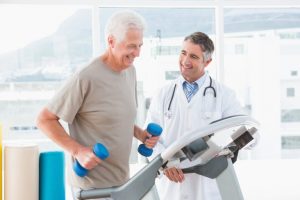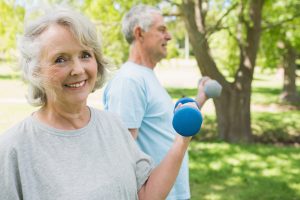The benefits of exercise for people living with Parkinson’s disease
Parkinson’s disease is a progressive, degenerative condition of the brain that affects 10 million people worldwide. In Australia, someone is diagnosed with it every 40 minutes!
It targets a particular part of the brain that produces dopamine and degeneration of this area affects the brains ability to control muscles. This causes the typical movement related effects of Parkinson’s such as shaking or tremors, stiffness, slow movement and difficulty with balance.
Symptoms usually develop slowly over a period of years, and often presents somewhat differently in each person because the disease is quite diverse. Each individual with Parkinson’s will have a different combination of symptoms, progression rate and intensity.
Parkinson’s is typically categorised as a ‘movement’ disorder by clinicians but in reality, it affects much more than just movement. It can affect a person’s emotions, memory, thinking, pain, sensory perception and gastrointestinal system. This means it has a huge impact on the day to day life of a person living with Parkinson’s disease.
Exercise provides many benefits to people suffering from Parkinson’s disease. It can improve nerve and physical function, help people socialise more easily and reduce anxiety and depression.


For a range of reasons people with Parkinson’s disease often don’t do much physical activity. There are balance and mobility challenges and independence can be compromised which may mean support is required. This all makes activity harder. Inactivity, however, can worsen the effects of the disease as well as any other conditions the individual may have such as heart disease, osteoporosis, muscle weakness, depression and difficulty getting a good night’s sleep.
Loss of fitness also increases the risk of falls, especially in those with Parkinson’s, who already have elevated risk. This can also have secondary effects such as increased risk of fractures and increased risk of head trauma which can both result in premature loss of independence and higher care needs.
By improving fitness, exercise protects against many complications of the disease. For example, better mobility may improve quality of life and prolong living independently.
There are many ways we can improve the health and fitness of Parkinson’s patients but simple strategies like treadmill walking, stationary cycling and body weight training are often best for helping people with Parkinson’s disease to live a happy and healthy life.
To find out more about how we can develop a personalised clinical exercise program just for you, why not chat to Marissa our Accredited Exercise Physiologist.



